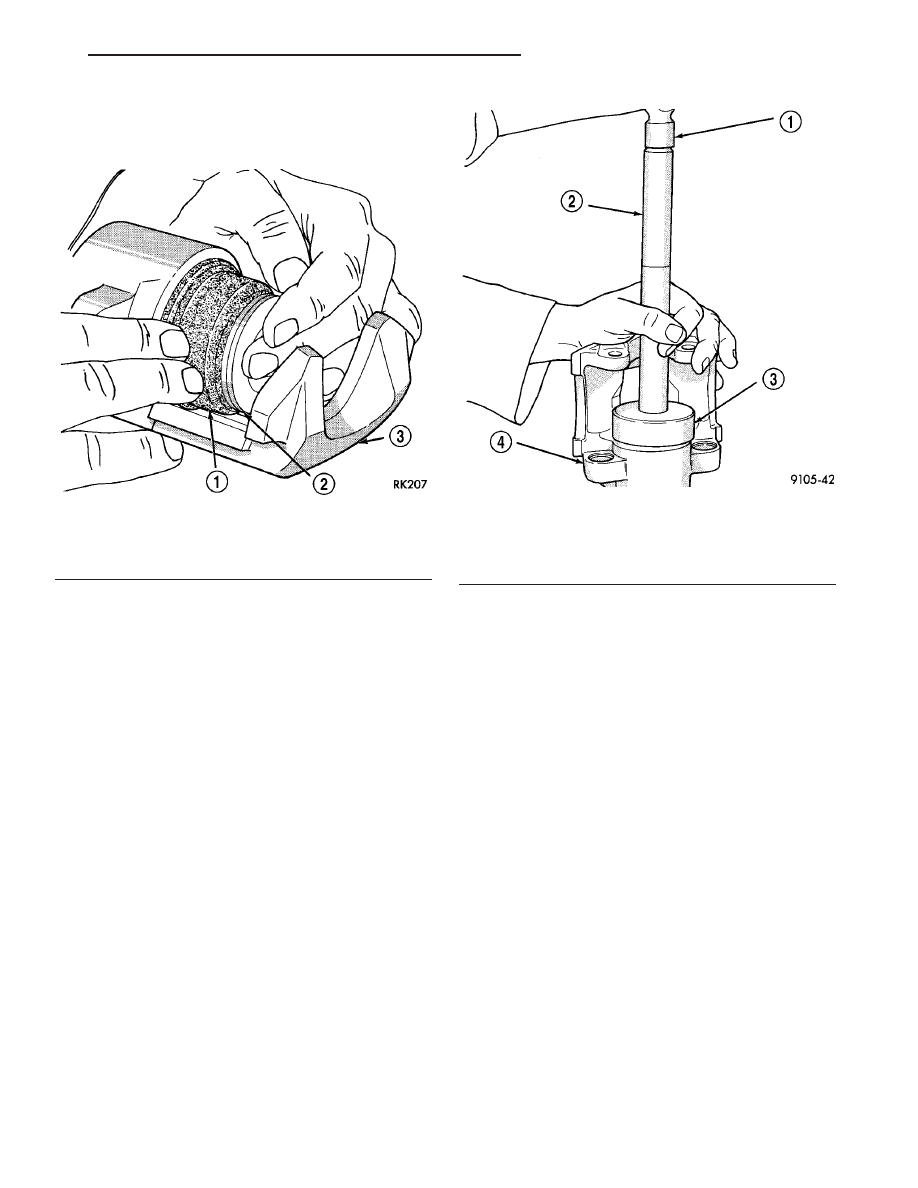Chrysler 300M, Dodge Interpid. Manual - part 33

(4) Install piston into caliper bore pushing it past
the piston seal until it bottoms in the caliper bore
(Fig. 38).
(5) Position the dust boot into the counterbore of
the caliper assembly piston bore.
(6) Using a hammer and Installer, Special Tool
C-4689 or C-4842 (depending on piston size), and
Handle, Special Tool C-4171, drive the boot into the
counterbore of the caliper as necessary (Fig. 39).
(7) Reinstall the caliper on the vehicle and bleed
the brakes as necessary. Refer to Installation in this
section.
INSTALLATION
INSTALLATION - FRONT CALIPER
CAUTION: Use care when installing the caliper
assembly on the steering knuckle, so seals on cal-
iper guide pin bushings do not get damaged by the
steering knuckle bosses.
(1) Completely retract the caliper piston back into
the piston bore of the caliper.
(2) If removed, install brake rotor on hub (Fig. 26).
(3) Lubricate both machined knuckle abutments
with a liberal amount of Mopar
t Brake Grease For
Caliper Slides Lubricant, or equivalent.
(4) Install one rail shim on each machined abut-
ment where it will contact the brake shoes. Make
sure the alignment tabs on the shims are positioned
toward the abutments.
(5) Carefully position caliper and brake shoes over
rotor by reversing removal procedure (Fig. 25).
CAUTION: When being installed, extreme caution
should be taken not to crossthread the caliper
guide pin bolts.
(6) Install the caliper guide pin bolts. Tighten
guide pin bolts to a torque of 22 N·m (192 in. lbs.).
(7) Install the banjo bolt connecting the flex hose
to the caliper. One washer should be installed on
each side of the flex hose fitting before installing the
banjo bolt. Tighten banjo bolt to a torque of 48 N·m
(35 ft. lbs.).
(8) Install the wheel and tire assembly.
(9) Tighten the wheel mounting stud nuts in
proper sequence until all nuts are torqued to half
specification. Then repeat the tightening sequence to
the full specified torque of 135 N·m (100 ft. lbs.).
(10) Lower vehicle.
CAUTION: After performing any service to the vehi-
cle brake system, be sure to obtain a firm brake
pedal before moving vehicle.
(11) Remove the brake pedal holding tool.
(12) Bleed the base brakes. (Refer to 5 - BRAKES -
BASE - STANDARD PROCEDURE)
Fig. 38 Installing Piston Into Caliper Bore
1 - BOOT
2 - PISTON
3 - CALIPER
Fig. 39 Installing Dust Boot
1 - HAMMER
2 - SPECIAL TOOL C-4171
3 - SPECIAL TOOL C-4689 or C-4842
4 - CALIPER
LH
BRAKES - BASE BRAKE SYSTEM
5 - 27
DISC BRAKE CALIPER - FRONT (Continued)